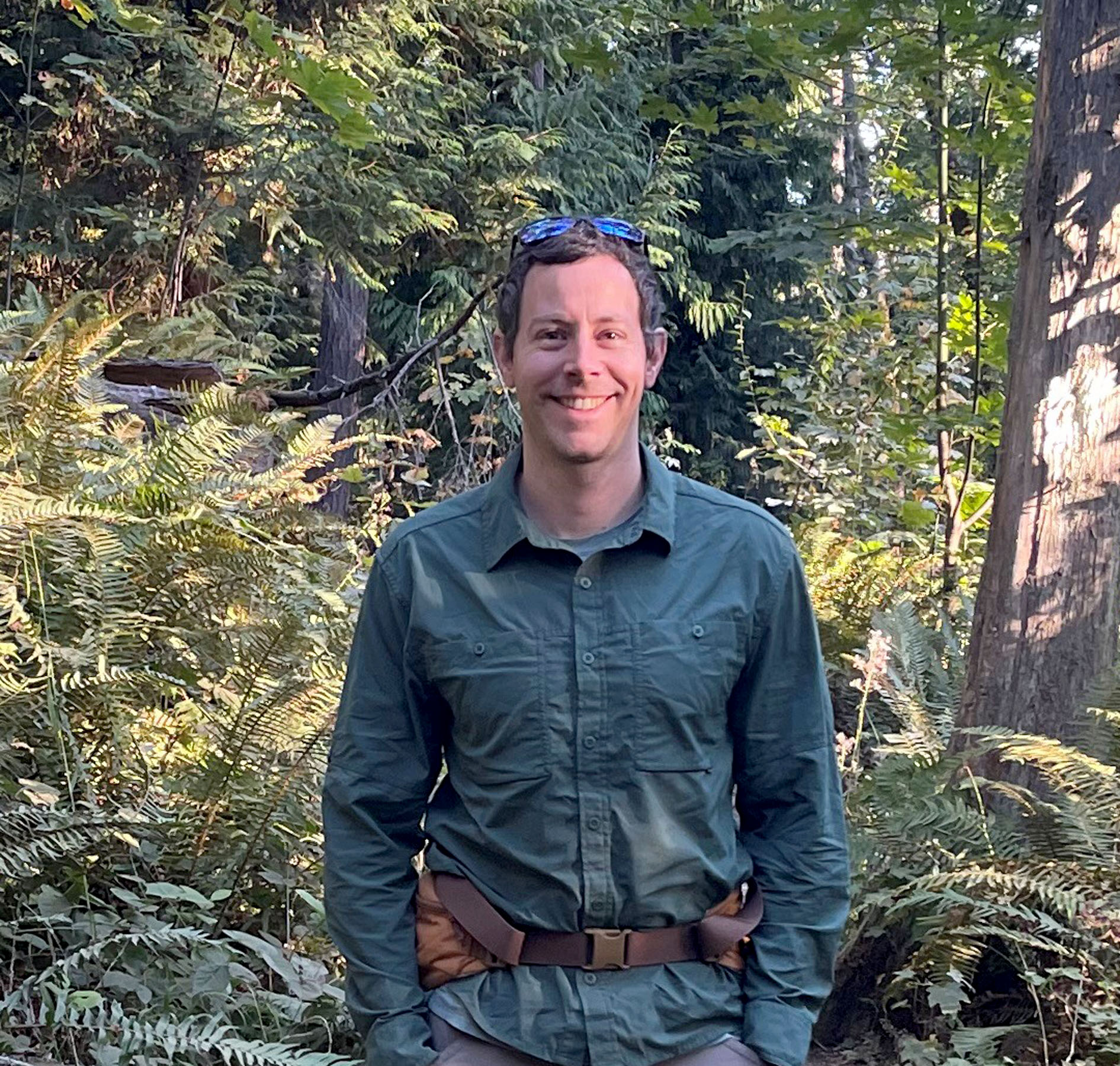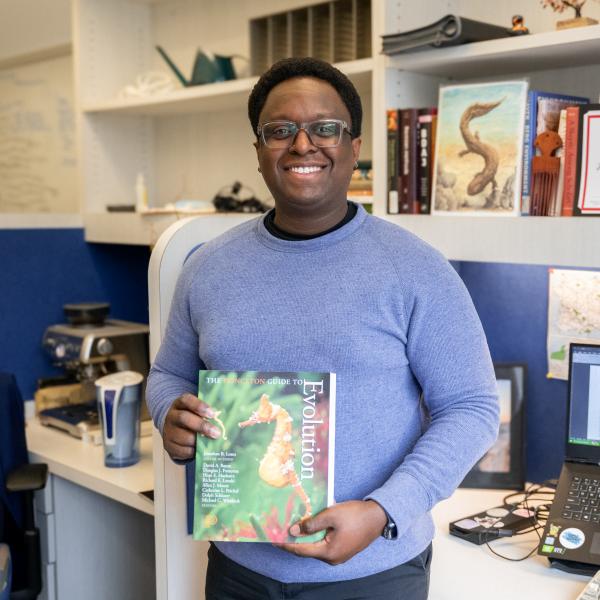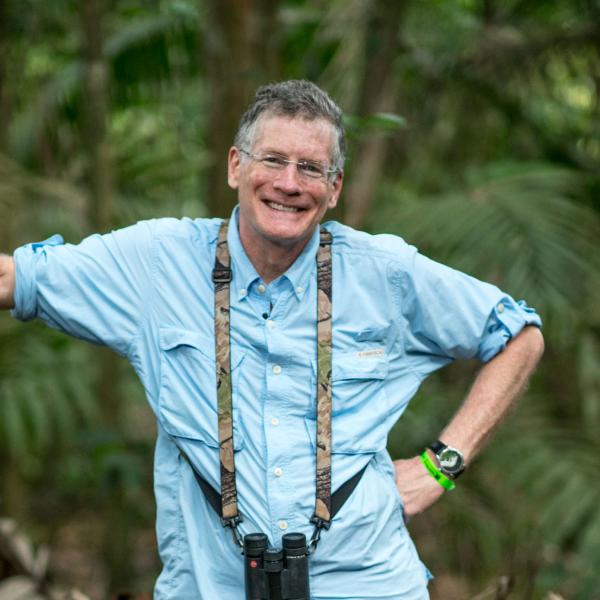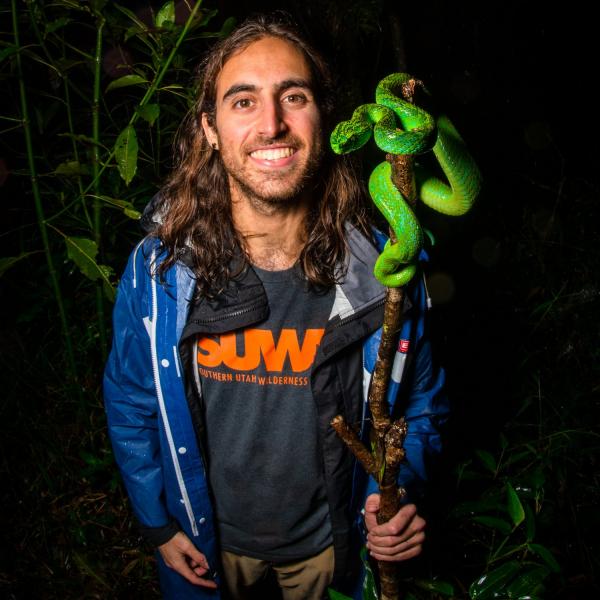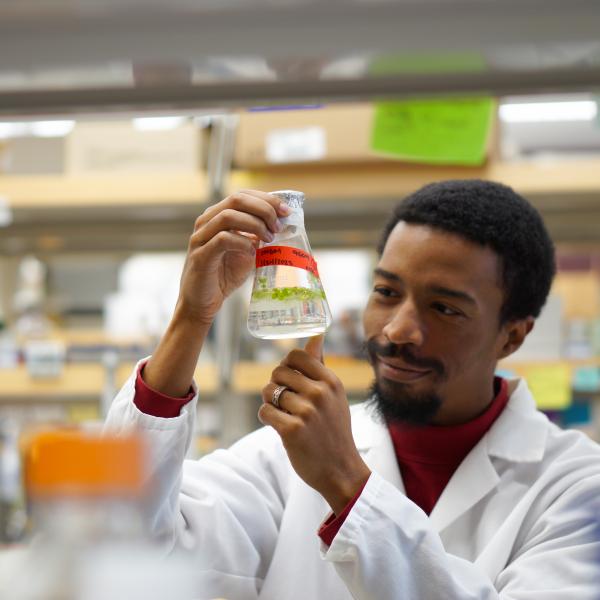Andi Kautt joined the Biology Department at WashU as a faculty member in July 2024.
He is from the small town of Ravensburg in southwest Germany, famous for its historic city center with more than a dozen medieval gates and towers, and Ravensburger board games and puzzles. Kautt’s interest in animal behavior and biodiversity began as a child studying picture books and animal fact sheets. He wondered why animals look and behave the way they do, and why we have so many different types. These questions continue to drive his research today.
“It’s mind-boggling to think that all of the biodiversity on Earth—from single cell organisms to animals to plants—started with random genetic mutations. Everything started with one common origin, one common ancestor, with a series of random genetic mutations, some of which resulted in variation in phenotypic traits which could then be acted upon by natural selection,” Kautt said.
He completed his bachelor’s degree in biological science at the nearby University of Konstanz located at the beautiful crystal-clear Lake Constance with stunning views of the Swiss Alps, musing that he had the privilege of studying where other people go for vacation. He stayed on to complete his PhD in the lab of Axel Meyer where he worked on evolution and adaptive radiation of cichlid fishes. How do species originate? How do we end up with multiple species that all look different and do different things starting from the same population? These are the questions researched by the Meyer lab. Scientists estimate there are between 2000 and 3000 species of cichlid fish. Most are in Africa, but Kautt studied a smaller more manageable system of cichlids in Nicaragua. These cichlids are geographically isolated in small crater lakes, adapting to specific ecological niches, leading to the origin of new species with distinct traits.
He moved to Boston to pursue a postdoc in the lab of Hopi Hoekstra at Harvard University, driven by a motivation to shift his focus towards behavioral evolution and the role of behavior in adaptation and speciation – a research agenda the Hoekstra lab pioneered, working on North American deer mice.
Kautt joined WashU as an Assistant Professor in July 2024. He was attracted by the variety of research fields and expertise within one biology department. He and his family also enjoy the things St. Louis has to offer as a city, such as affordable housing, and lots of family friendly activities like the zoo, museums, and sporting events.
Research in the Kautt Lab is more on the side of basic investigative research rather than applied science, but it has implications for the conservation of animals. The team seeks to uncover the genetic bases as well as cellular and molecular mechanisms that underlie differences in traits among animals. They often work on small, isolated populations and try to understand how animals adapt to their local environment, providing insights as to how animals may respond to rapidly changing environments (e.g., climate change mediated). Since they aim to elucidate the mechanisms underlying morphological or behavioral differences, their research helps to uncover fundamental biological mechanisms that –like essentially all basic research– may or may not become directly relevant to human health and wellbeing.
The Kautt lab currently has a lab manager, Kristina Ottens, a grad student, Shiyang Wu, and a couple of undergrad student assistants, and will continue to grow as they complete setup. The lab studies two animal systems—deer mice and local crayfish. Deer mice are the most abundant mammals in North America. Their distribution spans all the way from the West Coast to the East Coast and from Mexico all the way up to Alaska – remarkably, they have adapted to essentially every terrestrial habitat within this range. Crayfish are impressive little creatures in their own regard. There are almost 40 different species in Missouri alone (guess what the state invertebrate is?), having adapted to all kinds of environments, including standing water, streams and rivers, wetlands (they make elaborate burrows!), and caves. The fact that both animal systems are local and can be kept in the laboratory allows the Kautt Lab to conduct very integrative work. They use a combination of genomics and computational approaches, a wet lab, behavioral experiments in the lab, and fieldwork at WashU partner institutions Tyson Research Center and Shaw Nature Reserve to accomplish their research goals. Kautt eventually plans to participate in Tyson’s summer research programs for students including REU for undergrads, and high school programs—Shaw Institute for Field Training (SIFT) and Tyson Environmental Research Apprenticeship (TERA).
“We're trying to understand how and why animals look and behave the way they do, and why we have so many different species. We're taking a genomic-centered approach where we analyze the genetic makeup of different individuals and populations, and compare them to each other, trying to identify genetic differences that lead us to clues about the underlying cellular developmental mechanisms.
“Imagine you find a gene that is different between two animals that behave differently, and that gene encodes for a hormone receptor. Maybe that hormone is related to the behavioral change. You can test that and come up with follow-up experiments at the same time. If you identify such a genetic region, you can also look at its evolutionary history and try and understand if that gene has been under selection in the past, or if it’s evolving neutrally, or what else might be going on. It provides us with a handle for both looking at the molecular mechanisms and the evolutionary forces that have acted upon that,” Kautt explained. “I should add that we are focusing on innate behaviors, that is, behaviors that require no learning or prior experience.”
In his free time, Kautt enjoys being outside in nature, camping, hiking, and skiing in the Alps when he visits family in Germany. Learn more about the Kautt Lab’s research HERE.


